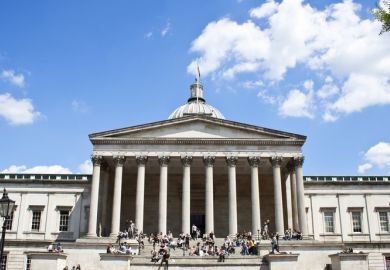Coronavirus infected as many as one in five students at some major US universities during the past semester, sickening local communities long after their campuses locked down, a Stanford University analysis has found.
Examining 30 major US universities, the study used detailed tracking of infection data to show that rapid campus shutdowns in response to outbreaks typically cut infection rates at the institutions but not incidences in their surrounding cities and towns.
The findings should serve as a cautionary warning as campuses assess whether and how to adjust their policies for the coming spring semester, said co-author Ellen Kuhl, a professor of mechanical engineering at Stanford.
With their ability to confine students to dormitories, deliver meals and move classes online, colleges can react quickly and effectively when testing shows a spike in infections, Professor Kuhl said. “Then the case number drops rapidly in two weeks,” she said.
“But the community – they don’t have that mechanism of control,” Professor Kuhl said, because many residents need to continue shopping for food and going to work.
The study, published in Computer Methods in Biomechanics and Biomedical Engineering, is among several that have shown large spikes in campus infection rates within the opening weeks of the autumn semester as students gathered together, often in defiance of official social distancing rules.
The study was based on 30 institutions chosen for their relatively large size, high national ranking and daily reporting of case numbers. More than half of those campuses were found to have had spikes that infected as many as one in 100 people within those first two weeks.
Among the 30, the most autumn semester cases were recorded at Ohio State University, 5,806; the University of Florida, 5,630; and Clemson University, 5,431. By student share, however, the leaders were the University of Notre Dame, with a ratio of 3,083 cases per 100,000 people; the University of Arizona, with 2,700; and Clemson, with 2,685.
Over the autumn semester, one in every five students at Clemson got infected, and one of six at Notre Dame, the data showed.
Institution-by-institution charts in the Stanford study show infection rates in surrounding communities often rising after campus spikes, then continuing to climb in many instances while the campus rates quickly subside.
Notre Dame is among numerous institutions that began the autumn semester with enthusiastic plans to welcome students back to campus, only to promptly shut again after many of those students gathered at off-campus parties and spread the virus.
For the spring semester, testing technologies are getting cheaper and more available for universities, said Christopher Marsicano, an assistant professor of the practice of higher education at Davidson College in North Carolina.
Yet the Stanford data should remind universities of the realities of student behaviour and disease spread, said Dr Marsicano, the founding director of the College Crisis Initiative, which studies higher education’s response to the pandemic.
“Despite the fact that the country is facing its highest case counts yet, a significant number of institutions are announcing that they are going to return to campus this spring,” he said.
Stanford itself has reverted to remote learning. The university operates on a quarterly system, and it announced this past weekend the cancellation of plans to invite freshmen and sophomores back to campus for winter quarter, as cases in California surge and 43 Stanford students have tested positive so far this month.
Register to continue
Why register?
- Registration is free and only takes a moment
- Once registered, you can read 3 articles a month
- Sign up for our newsletter
Subscribe
Or subscribe for unlimited access to:
- Unlimited access to news, views, insights & reviews
- Digital editions
- Digital access to THE’s university and college rankings analysis
Already registered or a current subscriber? Login








